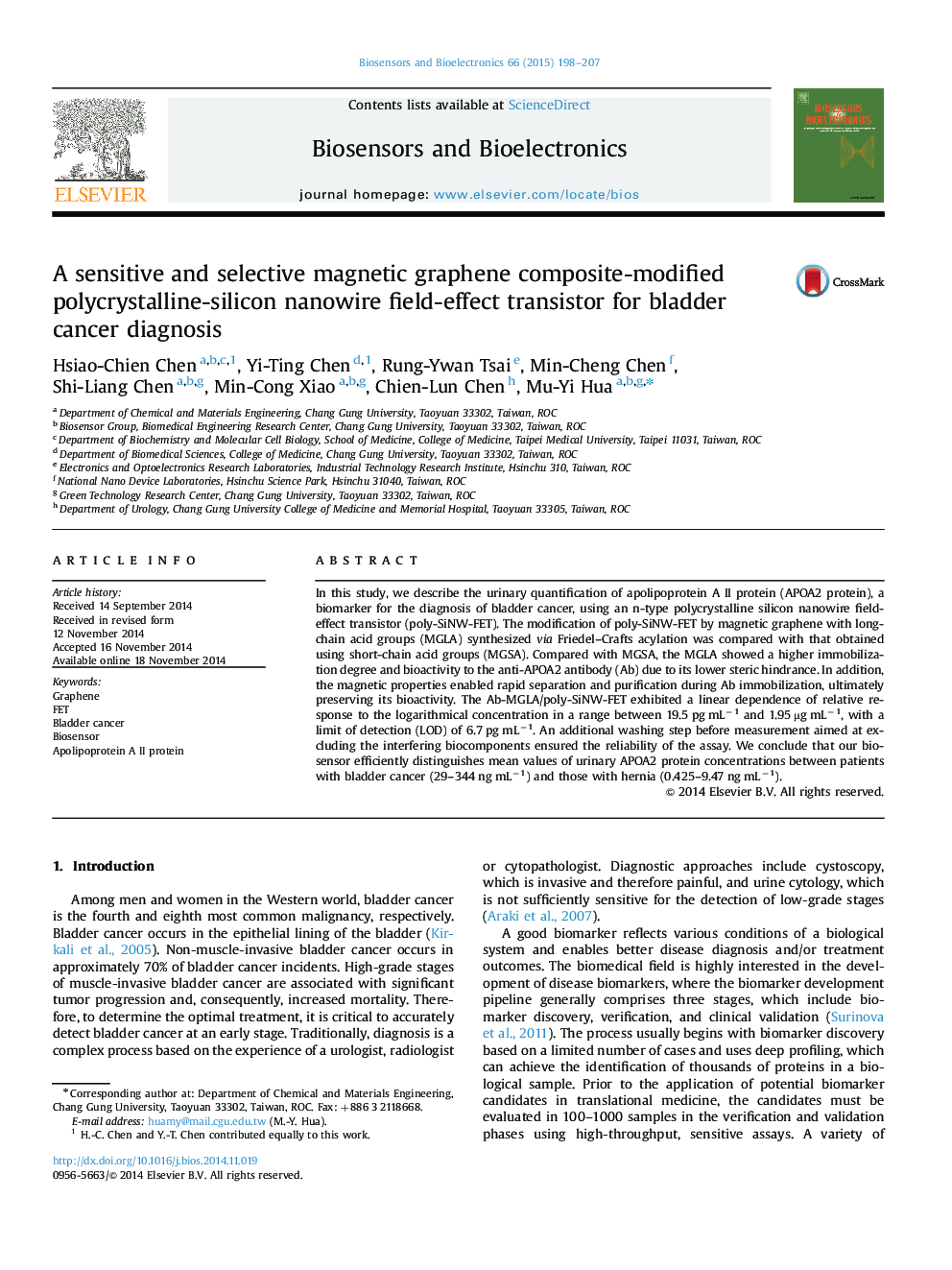| Article ID | Journal | Published Year | Pages | File Type |
|---|---|---|---|---|
| 7232569 | Biosensors and Bioelectronics | 2015 | 10 Pages |
Abstract
In this study, we describe the urinary quantification of apolipoprotein A II protein (APOA2 protein), a biomarker for the diagnosis of bladder cancer, using an n-type polycrystalline silicon nanowire field-effect transistor (poly-SiNW-FET). The modification of poly-SiNW-FET by magnetic graphene with long-chain acid groups (MGLA) synthesized via Friedel-Crafts acylation was compared with that obtained using short-chain acid groups (MGSA). Compared with MGSA, the MGLA showed a higher immobilization degree and bioactivity to the anti-APOA2 antibody (Ab) due to its lower steric hindrance. In addition, the magnetic properties enabled rapid separation and purification during Ab immobilization, ultimately preserving its bioactivity. The Ab-MGLA/poly-SiNW-FET exhibited a linear dependence of relative response to the logarithmical concentration in a range between 19.5 pg mLâ1 and 1.95 µg mLâ1, with a limit of detection (LOD) of 6.7 pg mLâ1. An additional washing step before measurement aimed at excluding the interfering biocomponents ensured the reliability of the assay. We conclude that our biosensor efficiently distinguishes mean values of urinary APOA2 protein concentrations between patients with bladder cancer (29-344 ng mLâ1) and those with hernia (0.425-9.47 ng mLâ1).
Keywords
Related Topics
Physical Sciences and Engineering
Chemistry
Analytical Chemistry
Authors
Hsiao-Chien Chen, Yi-Ting Chen, Rung-Ywan Tsai, Min-Cheng Chen, Shi-Liang Chen, Min-Cong Xiao, Chien-Lun Chen, Mu-Yi Hua,
